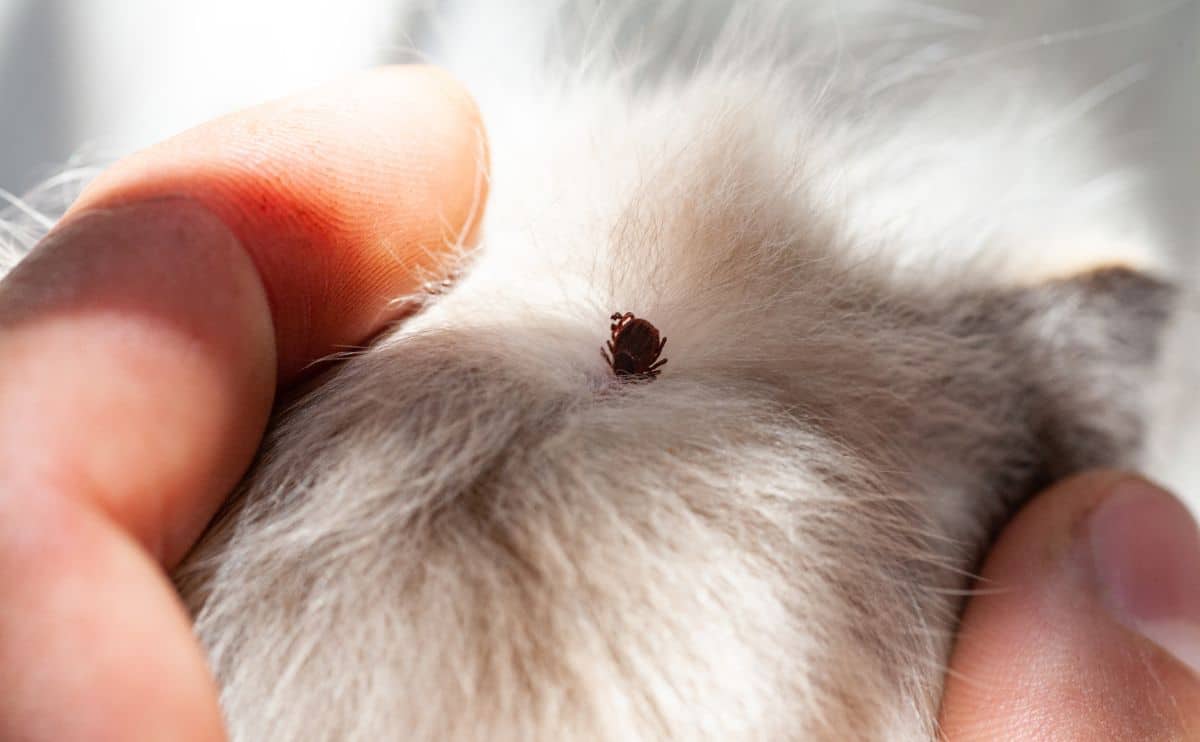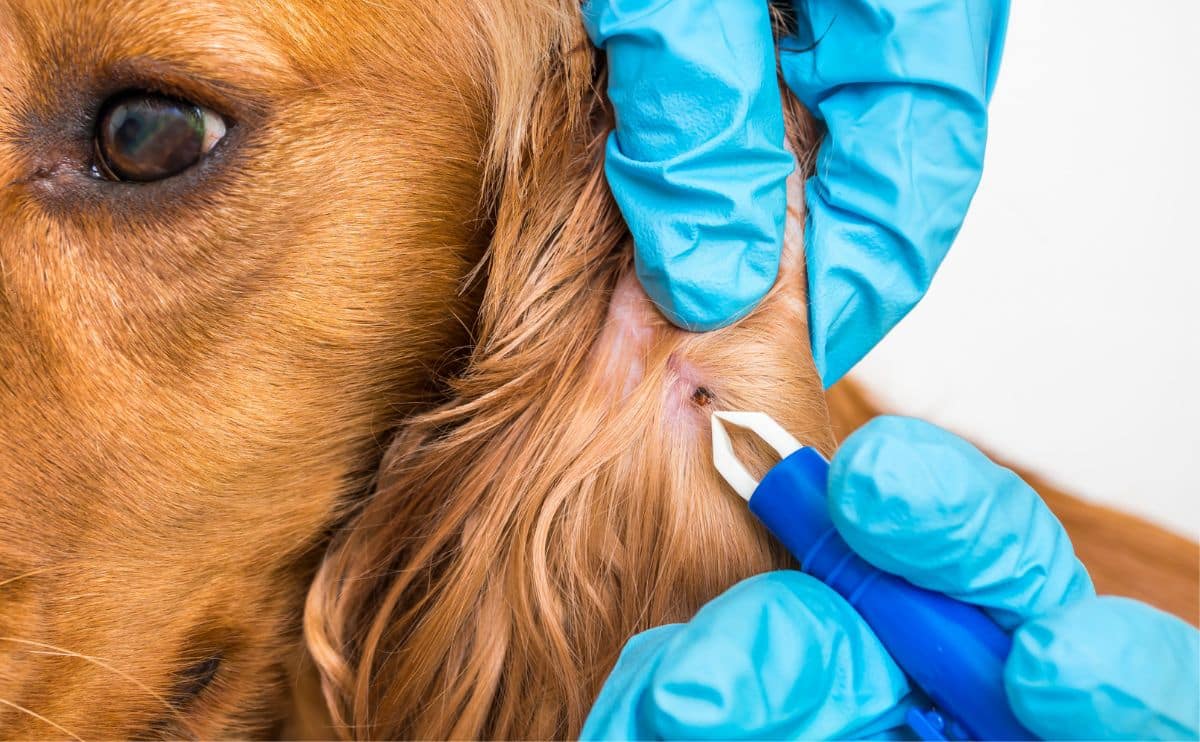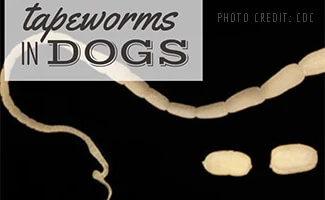Found A Tick On Your Dog? Here’s Exactly What To Do (And What Not To Do)
When you purchase through links on our site, we may earn a commission. Here’s how it works.
You’re giving your pup some well-earned belly rubs when your fingers freeze on something small and suspicious. Is it a scab? A bump? Nope—it’s a tick.
Table of Contents
Welcome to every dog parent’s nightmare.

Ticks aren’t just gross. They’re tiny biohazards that can transmit serious diseases like Lyme, ehrlichiosis, and Rocky Mountain spotted fever. The worst part? If you don’t remove them properly, you could leave your dog more vulnerable than if you’d done nothing at all.
Here’s how to handle the situation like a pro—no panic, no petroleum jelly, no myths.
What Does A Tick Look Like On A Dog?
Wondering what does an embedded tick look like on a dog? It’s a question we hear all the time—and spotting one early makes all the difference.
Ticks are sneaky. Before they feed, they look like tiny flat seeds—brown, black, or reddish. Once they latch on and fill up with blood, they balloon into grape-like blobs.

Some embed so deeply that they look like skin growths (similar to a skin tag).
Check these common tick hideouts:
- Inside and around ears
- Between toes
- Under the collar
- Near the eyes
- Around the tail and groin
- Under front legs
Pro tip: If you hike, camp, or live near woods or tall grass, do a post-adventure tick check every single time.
Step-by-Step: How To Remove A Tick From Your Dog
If you’ve been searching for how to remove a tick from a dog, you’re not alone. Here’s a method that’s safe, vet-recommended, and easy to follow.
Before you start plucking, pause. Tick removal is delicate work—and doing it wrong can lead to infections or increase the chance of disease transmission.
You want this to be quick, clean, and safe. That means using the right tools, applying steady pressure, and not panicking.
Let’s walk through exactly how to do it the right way.
What You Need:
- Needle-nose tweezers or a tick removal tool (like ZenPet’s Tick Tornado)
- Gloves (optional but smart)
- Isopropyl alcohol
- Antiseptic for dogs (chlorhexidine, betadine)
- A sealed container or ziplock bag
The Safe Removal Process:
- Stay calm. Your dog can sense your energy.
- Part the fur gently to expose the tick.
- Grasp the tick as close to the skin as possible using your tweezers.
- Pull straight out with steady, even pressure. No twisting. No yanking.
- Place the tick in a sealed bag or container with alcohol. Save it for testing if needed.
- Clean the bite area with antiseptic.
- Clean your tweezers or tool with alcohol.
- Wash your hands thoroughly.
- Make a note of the bite date and the appearance of the tick (in case your dog develops any disease symptoms, this can be helpful for your veterinarian)
If part of the tick breaks off and remains embedded, don’t dig. Call your vet.
Our Personal Experience Removing Ticks From Dogs
The first time I found a tick on my Labrador’s belly, I panicked and grabbed a cotton ball soaked in vinegar—huge mistake. It didn’t work, and I ended up at the vet with a half-removed tick. I’ve since learned the value of calm, proper technique and always have a tick tool in our hiking pack now.
– Emma Braby, Dog Mom & Canine Journal Writer
An Expert Warning
“Many people search the internet for ways to remove a tick. This can be dangerous, as many methods are not safe,” says Dr. Joanna Woodnutt, MRCVS. “Agitating the tick can make them vomit, which makes it far more likely that they’ll spread disease to your pet.”
Don’t Try This At Home: Tick Removal Myths That Could Hurt Your Dog
You might’ve heard these online or from well-meaning friends. They’re wrong. And dangerous.
- Petroleum jelly: Suffocates the tick slowly but can regurgitate harmful bacteria into your dog while dying.
- Burning with a match: Risky, painful, and ineffective.
- Twisting the tick: Often leaves mouthparts embedded.
Many pet owners search online for how to remove a tick from a dog with Vaseline. But despite what the internet says, this method is outdated—and dangerous.
Stick to tweezers or a tick removal tool. Science backs it.
A systematic review of tick removal methods concluded that the safest and most effective technique is to use fine-tipped tweezers to grasp the tick close to the skin and gently pull it away from the site of attachment.
Aftercare: What To Do After Removing A Tick
Keep your eyes peeled for any of the following in the next few days:
- Fever
- Lethargy
- Loss of appetite
- Stiff joints or lameness
- Swelling or redness at the bite site
- Vomiting or diarrhea
If you notice anything off, call your vet immediately. Early treatment can prevent long-term issues.
Also, make a note of:
- The date
- Where the tick was found
- How your dog’s acting
It’s helpful data if symptoms appear later.
What Diseases Can Ticks Transmit to Dogs?
Once a tick bites its victim, it can transmit diseases as soon as three to six hours. So, checking for ticks regularly and removing them as soon as possible can help reduce the chance that your dog will become ill.
Unfortunately, ticks are tiny, disease-ridden hitchhikers. Depending on where you live, your dog might be at risk for:
- Lyme disease
- Ehrlichiosis
- Anaplasmosis
- Rocky Mountain Spotted Fever
- Babesiosis
- Bartonellosis
- Hepatozoonosis
Symptoms range from mild to life-threatening. In some cases, symptoms may not appear until weeks or months later. That’s why preventive care matters just as much as removal.
Can Ticks Spread Diseases To Humans?
Some infectious illnesses can easily spread to humans and other pets if a tick bites them. Lyme disease is a major concern, especially because symptoms in humans can be vague and may linger for months, causing joint pain, fatigue, and neurological issues.
Even more alarming, your dog could carry a tick that contains the Powassan virus, a rare but often fatal infection in humans. It can be transmitted in as little as 15 minutes after the tick attaches.
Important: Just because a tick bites your dog doesn’t mean it can’t later bite a human—you’re at risk, too.
How Common Are Ticks On Pets?
“A number of studies have shown that there’s been an increase in the abundance of ticks in recent decades,” says Woodnutt. “In addition, ticks appear to be spreading out from their traditional geographical areas, especially toward the north. It’s assumed that this is due to climate change. Still, it’s possible that other things (like deer farming, increased movement of animals, and changes in habitat management) could be contributing, too.”
Woodnut also says, “With more ticks around, it stands to reason that more bites are happening, and it’s definitely something to be aware of,” says Woodnutt.
Tick Prevention: Keep Them Off Before They Latch On
You have options—and they work best when used together.
- Monthly oral preventives (e.g., NexGard, Simparica, Bravecto)
- Topical treatments
- Tick collars (e.g., Seresto)
- Yard treatment: Clear tall grasses, leaf litter, and woodpiles.
- Routine grooming: Brushing helps you spot ticks early.
One of the best ways to prevent ticks from harboring on your dog is to use a flea and tick prevention product year-round. Our experts have chosen the best tick and flea prevention products, including topicals, shampoos, and sprays.
Or, talk to your vet about the best combo for your region and your dog’s lifestyle.
Bonus: Tick Species & What They Mean
Different ticks, different threats.
- Deer tick (black-legged): Carries Lyme.
- American dog tick: Spreads Rocky Mountain spotted fever.
- Brown dog tick: Can infest your home and survive indoors.
If you’re in the U.S., the Centers for Disease Control and Prevention (CDC) has an excellent tick identification guide.
Frequently Asked Questions
Here are some of the questions our readers ask most often about ticks on dogs. If I missed yours, let me know in the comments.
Should I Try An Alternative Tick Removal Method Like Dental Floss?
No. You should not try any alternative tick removal method. Some people say they have used dental floss, but it is not recommended.
While floss can remove a tick sometimes, it often presses into the tick, breaking it in half and leaving some embedded in your pup.
Alternative methods rarely work and often make the situation worse. It’s worth the effort to get the proper removal tools.
How Long Do Ticks Stay On Dogs?
If you don’t find ticks on your dog and remove them, they usually stay until they finish feeding and drop off on their own. Feeding usually lasts several days but can last up to two weeks.
What Does A Tick Bite Look Like On A Dog?
Once ticks detach (or after you remove them), they often leave a small red bump that resembles a mosquito bite.
However, tick bites aren’t always easy to spot, particularly on dark-haired or thick-coated dogs. These bumps usually resolve themselves over a few days.
What Happens If A Dog Eats A Tick?
Tick bites itch, so your dog could accidentally eat a tick if they’re chewing in the area. But don’t worry. If your dog eats a tick, he may vomit, but he won’t become infected with a tick-borne illness. The stomach lining will help protect your pup.
What If I Find A Dried Dead Tick On My Dog?
If the dried dead tick on your dog is still embedded, follow the removal steps above. Unfortunately, a dead tick can still transmit diseases, so remove it as soon as you discover it.
Are Certain Dog Breeds More Prone To Ticks?
Some dog breeds are more prone to getting ticks than others, although this also depends on lifestyle.
Longer-coated dogs are more likely to get ticks, perhaps because ticks find it easier to attach and hide or because dogs find it harder to groom ticks off themselves.
Toy breeds are less likely to get ticks, probably because of the areas in which they are walked and the type of exercise they do—they may be more likely to walk around a park on a paved surface than run through the undergrowth.
Is There A Natural Way To Prevent Ticks?
Some use neem oil or eucalyptus essential oil, but their effectiveness is inconsistent and may irritate pets. Vet-recommended preventives are safer and more reliable.
Do Indoor Dogs Need Tick Protection?
Yes. Ticks can hitchhike inside on clothing or other pets. Brown dog ticks can even infest indoor spaces.
Does Pet Insurance Cover Tick Prevention?
Pet insurance does not cover tick prevention. However, wellness plans, which can be added to some pet insurance policies, often include tick preventative medication in their coverage. You can read our pet insurance reviews to learn more about how it works and what it covers.
Why Trust Canine Journal?
Sally has over 20 years of experience in human health sciences communications, including 10 years as an expert on pet health conditions and treatment. She’s also spent over a decade researching pet insurance as part of an expert team at Canine Journal. As dedicated canine professionals and long-time dog owners, we test and research the best pet products, not only for our own pups but for all of our readers.



